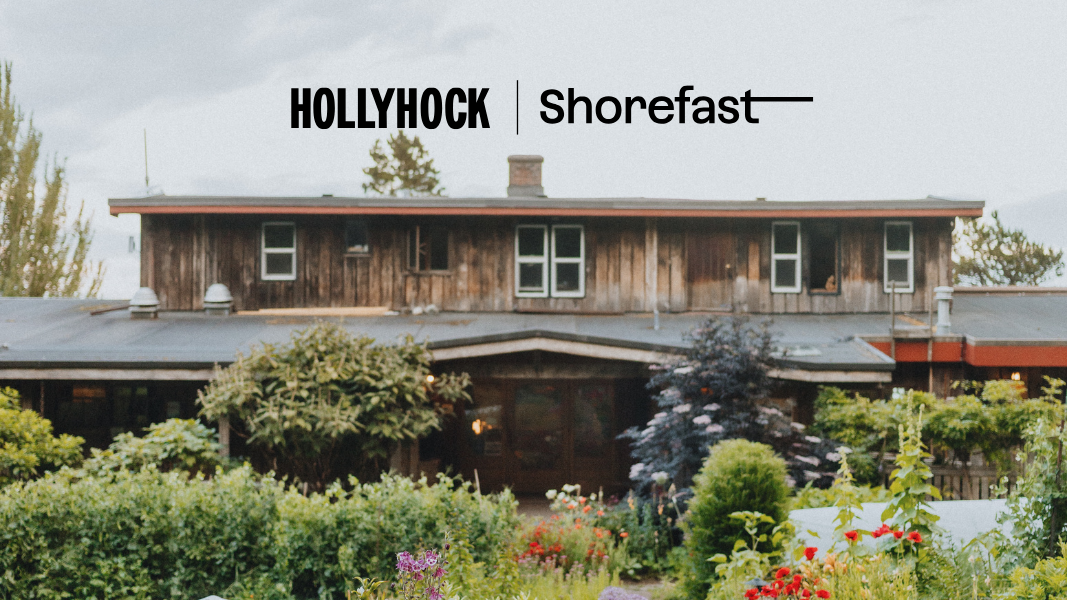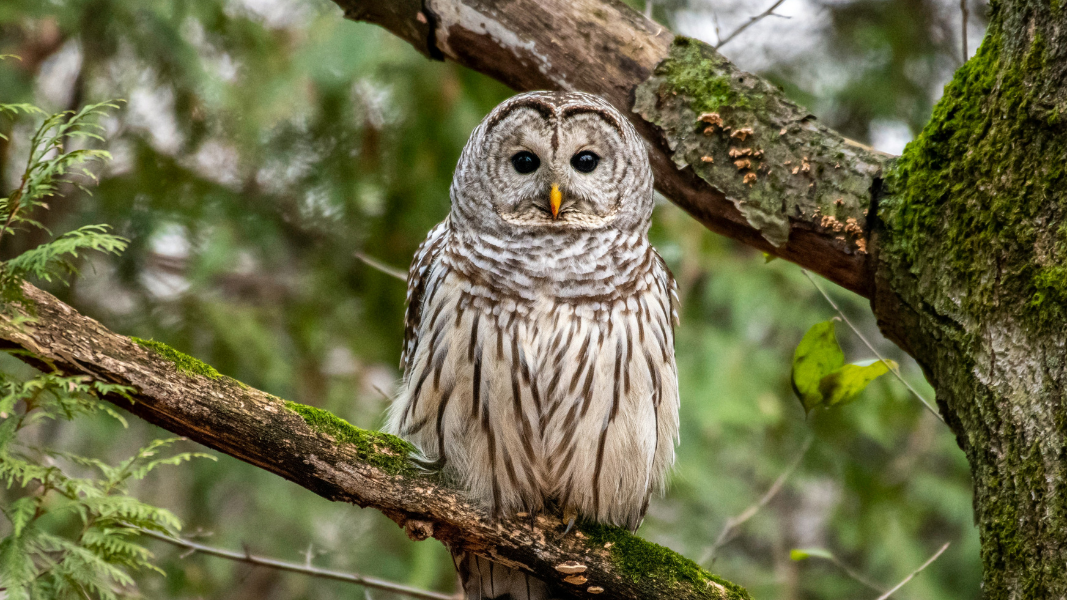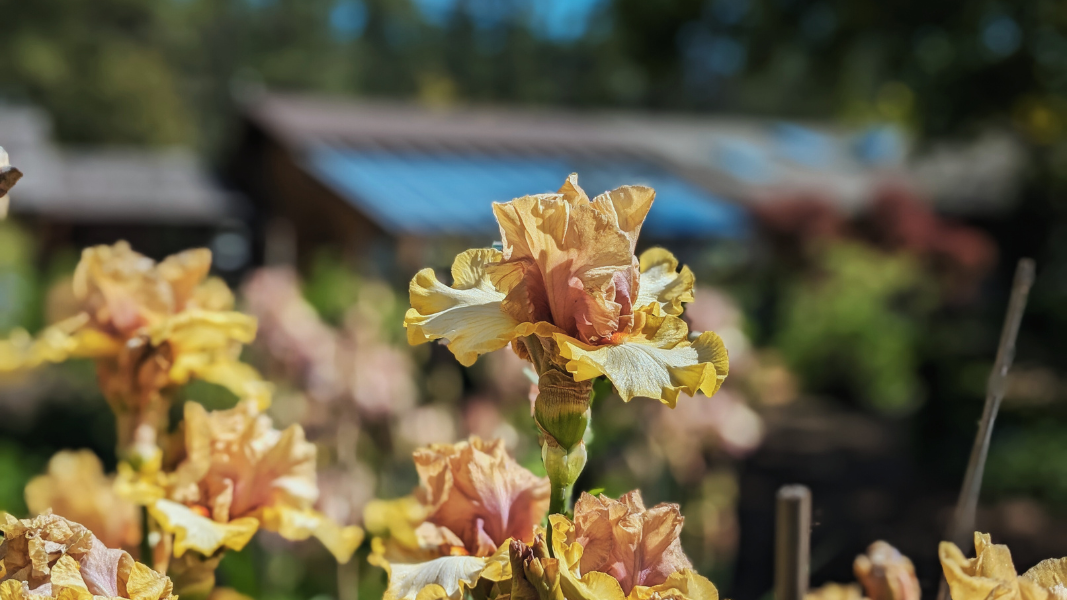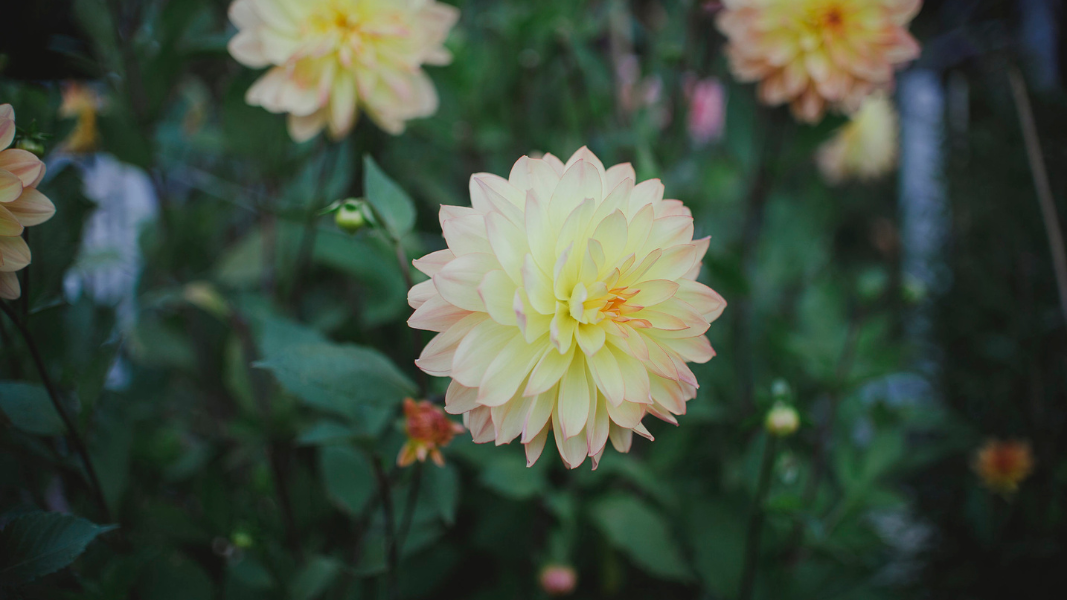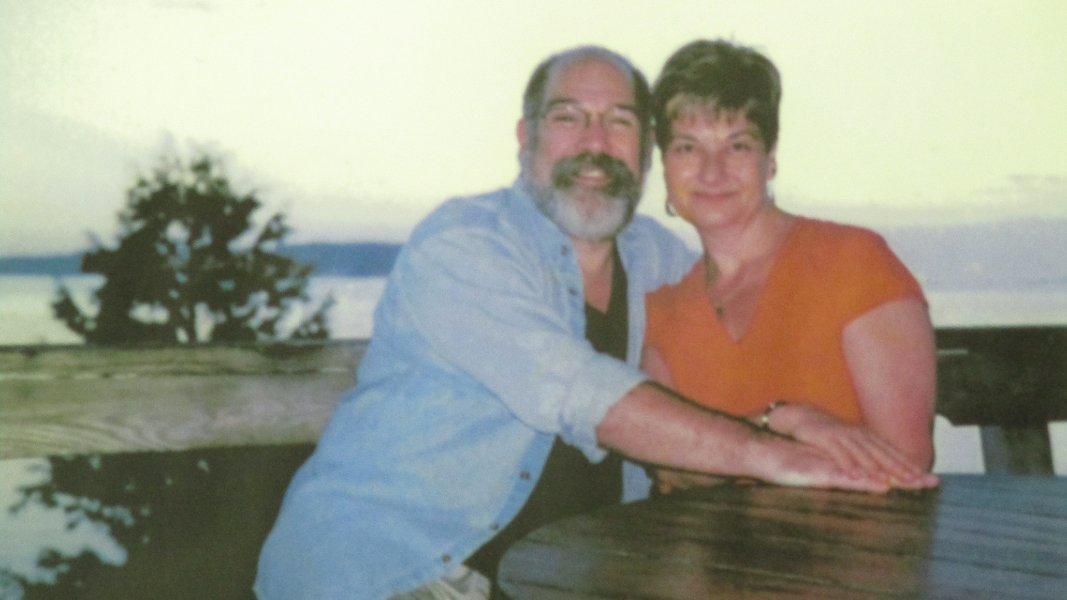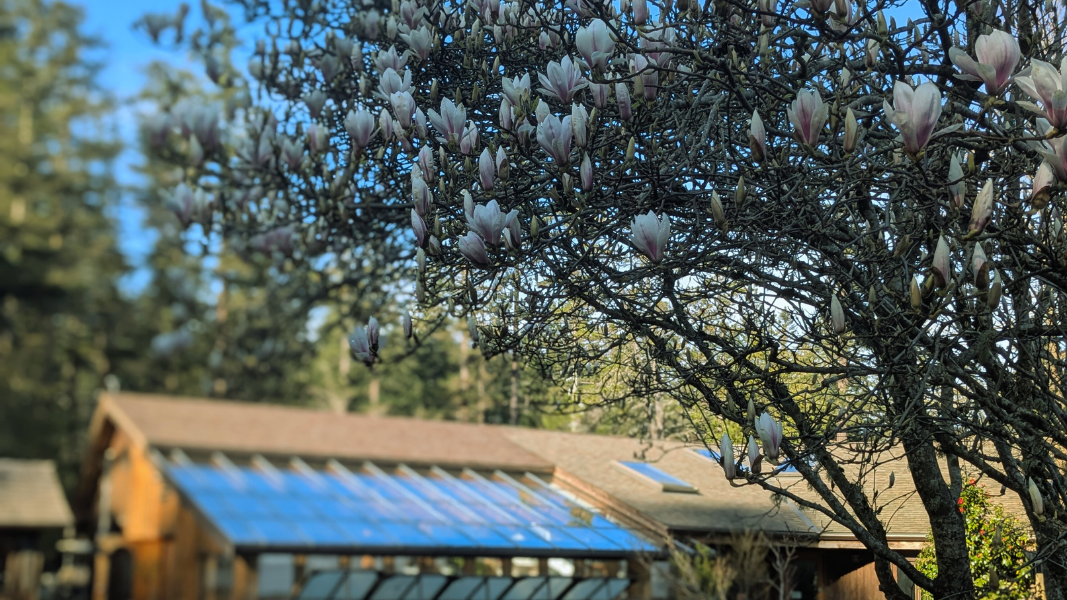Rex Weyler, one of Hollyhock’s founders and founder of Greenpeace, shares his story on how Hollyhock found it’s name in this 25th Anniversary commemoration from 2007.
In the summer of 1981, I attended the Vancouver Folk Festival as I had every year since it started. At midday, on one of the small stages, a group of seven women from Hungary performed astounding vocal harmonies. The oldest woman appeared about 70 and the youngest girl about 12. The other women ranged in height and age. This, I thought, is culture. The old woman was once the little girl. The little girl will one day lead this group as an elder. This is how real human culture works.
As the women sang rounds and chants and complex harmonies, the older woman, the leader, held out a brass pot before the crowd. “Cast your rings into the pot,” she declared. “Learn your fortune.” She walked from the stage, followed by the other women and girls, all singing, and wandered through the crowd, down to the edge of the pond. “Cast your rings into the pot. Cast your rings into the pot. Learn your fortune.” Stepping in among the bulrushes, the old Hungarian woman dipped the pot into the pond, took up some water, and led the procession back up toward the stage. People reached forward and placed their rings into the pot. Inspired by the performance, I caught up to the grandmother and cast my ring into the pot.
Back at the stage, the women still singing, the old woman pulled rings from the pot, one-by-one, handed them to the owners, and whispered a fortune to each person. When she drew out my ring, I stepped forward. She handed me the ring and whispered in my ear: “Red hollyhocks growing above the hedge. Look for them. They will be very important to you.”
Red hollyhocks? That’s my fortune? I mused over this for several weeks. I recall driving down 4th Avenue in Vancouver, seeing hollyhocks in a garden on the corner of Trafalgar Street, and spinning around. But they were pink, not red. False alarm. I looked up hollyhocks in the botanical books and discovered that they were used for healing and mystical rituals at least 60,000 years ago. Okay, maybe the hollyhocks are a metaphor for my health.
At the end of that summer, I went to Cortes Island for the first time, with my friend Kim Bothen, to visit Lee and Shivon Robinsong, who had recently moved there. We stayed at their home, walked in the woods, and I told them about my cryptic Hollyhock fortune. The next morning, we took a long walk, south along the beach toward Sutil Point.
We passed an upland farm and came upon some abandoned buildings, a farmhouse and a cottage on the beach. “What’s this?” I asked. Shivon explained that the newer buildings were built by the former Cold Mountain Institute, a gestalt therapy centre from the 1970s. The Institute had grown slightly famous in B.C. history as the site of early, cutting edge “encounter groups,” and humanistic psychology seminars. Now, a lone caretaker, Xanon by name, lived in the beach cottage.
I wanted to investigate, so we wandered up the hill into the main farmhouse and lodge. I had been working in Boston, still had a flat in Vancouver, but had considered leaving urban life for the bush. Only a few months earlier, on the Pine Ridge Lakota Reservation in South Dakota, the traditional chief, Fools Crow, had told me: “The best way to help native people is to find a place where you can stay and protect.” I found myself falling in love with this magical spot on the beach. Was this the place? The fact that the buildings appeared neglected, stirred my interest. Someone should look after this place, I thought.
My friends moved through the lodge and out another door. I sat alone in an ocean-side room before a stone fireplace. Overgrown brambles poked through broken windows. Spiders had set up neatly in the corners of the windows. I have nothing against spiders, but I felt an overwhelming sensation that this place needed someone to love it and bring it back to life. I felt as if the apple trees and buildings were asking to be cared for. A strange sense of responsibility invaded me. I am a fairly practical person, not generally inclined to mystical epiphanies, so I can’t explain any of these feelings. It just happened that way.
At that moment, Shivon and our friend Kate returned from their wanderings, quite excited. “Rex, come here. You have to see this.” I followed them out onto a deck, facing a magnificent forest of cedar, hemlock, and fir tress. Between the forest and the lodge, an enormous garden appeared completely overgrown with brambles and grass. Except, there before me, above a hedge, stood bright red hollyhocks, just as the Hungarian woman had described.
Now, my head spun and my knees felt week. My practical, rational brain could not put all this together. Listening to whispering trees and fortunetellers was not my usual way of making life decisions, but I felt helpless. Destiny appeared to have her way with me.
Later, we talked about acquiring the land and living there. We didn’t officially name it until much later, but we began referring to the little settlement as “Hollyhock.” We ended up buying the place, originally naming it “Hollyhock Farm,” and now simply “Hollyhock,” with a program of seminars and workshops and a training and networking centre for environmental activists. My three boys grew up there in the forest and on the beach and now return in the summer to wash dishes for the guests and see their old friends.
I have often wondered about the fate of the Hungarian fortune-telling singers. The old woman must have passed on, and perhaps the little girl now stands in the middle of the group, a strong, lovely woman almost forty. I would like to whisper back to her, that someday, she’ll lead the group, tell fortunes, and help others touch the mysteries of the universe.
Back at the stage, the women still singing, the old woman pulled rings from the pot, one-by-one, handed them to the owners, and whispered a fortune to each person. When she drew out my ring, I stepped forward. She handed me the ring and whispered in my ear: “Red hollyhocks growing above the hedge. Look for them. They will be very important to you.”
Red hollyhocks? That’s my fortune? I mused over this for several weeks. I recall driving down 4th Avenue in Vancouver, seeing hollyhocks in a garden on the corner of Trafalgar Street, and spinning around. But they were pink, not red. False alarm. I looked up hollyhocks in the botanical books and discovered that they were used for healing and mystical rituals at least 60,000 years ago. Okay, maybe the hollyhocks are a metaphor for my health.
At the end of that summer, I went to Cortes Island for the first time, with my friend Kim Bothen, to visit Lee and Shivon Robinsong, who had recently moved there. We stayed at their home, walked in the woods, and I told them about my cryptic Hollyhock fortune. The next morning, we took a long walk, south along the beach toward Sutil Point.
We passed an upland farm and came upon some abandoned buildings, a farmhouse and a cottage on the beach. “What’s this?” I asked. Shivon explained that the newer buildings were built by the former Cold Mountain Institute, a gestalt therapy centre from the 1970s. The Institute had grown slightly famous in B.C. history as the site of early, cutting edge “encounter groups,” and humanistic psychology seminars. Now, a lone caretaker, Xanon by name, lived in the beach cottage.
I wanted to investigate, so we wandered up the hill into the main farmhouse and lodge. I had been working in Boston, still had a flat in Vancouver, but had considered leaving urban life for the bush. Only a few months earlier, on the Pine Ridge Lakota Reservation in South Dakota, the traditional chief, Fools Crow, had told me: “The best way to help native people is to find a place where you can stay and protect.” I found myself falling in love with this magical spot on the beach. Was this the place? The fact that the buildings appeared neglected, stirred my interest. Someone should look after this place, I thought.
My friends moved through the lodge and out another door. I sat alone in an ocean-side room before a stone fireplace. Overgrown brambles poked through broken windows. Spiders had set up neatly in the corners of the windows. I have nothing against spiders, but I felt an overwhelming sensation that this place needed someone to love it and bring it back to life. I felt as if the apple trees and buildings were asking to be cared for. A strange sense of responsibility invaded me. I am a fairly practical person, not generally inclined to mystical epiphanies, so I can’t explain any of these feelings. It just happened that way.
At that moment, Shivon and our friend Kate returned from their wanderings, quite excited. “Rex, come here. You have to see this.” I followed them out onto a deck, facing a magnificent forest of cedar, hemlock, and fir tress. Between the forest and the lodge, an enormous garden appeared completely overgrown with brambles and grass. Except, there before me, above a hedge, stood bright red hollyhocks, just as the Hungarian woman had described.
Now, my head spun and my knees felt week. My practical, rational brain could not put all this together. Listening to whispering trees and fortunetellers was not my usual way of making life decisions, but I felt helpless. Destiny appeared to have her way with me.
Later, we talked about acquiring the land and living there. We didn’t officially name it until much later, but we began referring to the little settlement as “Hollyhock.” We ended up buying the place, originally naming it “Hollyhock Farm,” and now simply “Hollyhock,” with a program of seminars and workshops and a training and networking centre for environmental activists. My three boys grew up there in the forest and on the beach and now return in the summer to wash dishes for the guests and see their old friends.
I have often wondered about the fate of the Hungarian fortune-telling singers. The old woman must have passed on, and perhaps the little girl now stands in the middle of the group, a strong, lovely woman almost forty. I would like to whisper back to her, that someday, she’ll lead the group, tell fortunes, and help others touch the mysteries of the universe.
Photocredit: Amanda Mary Creative



